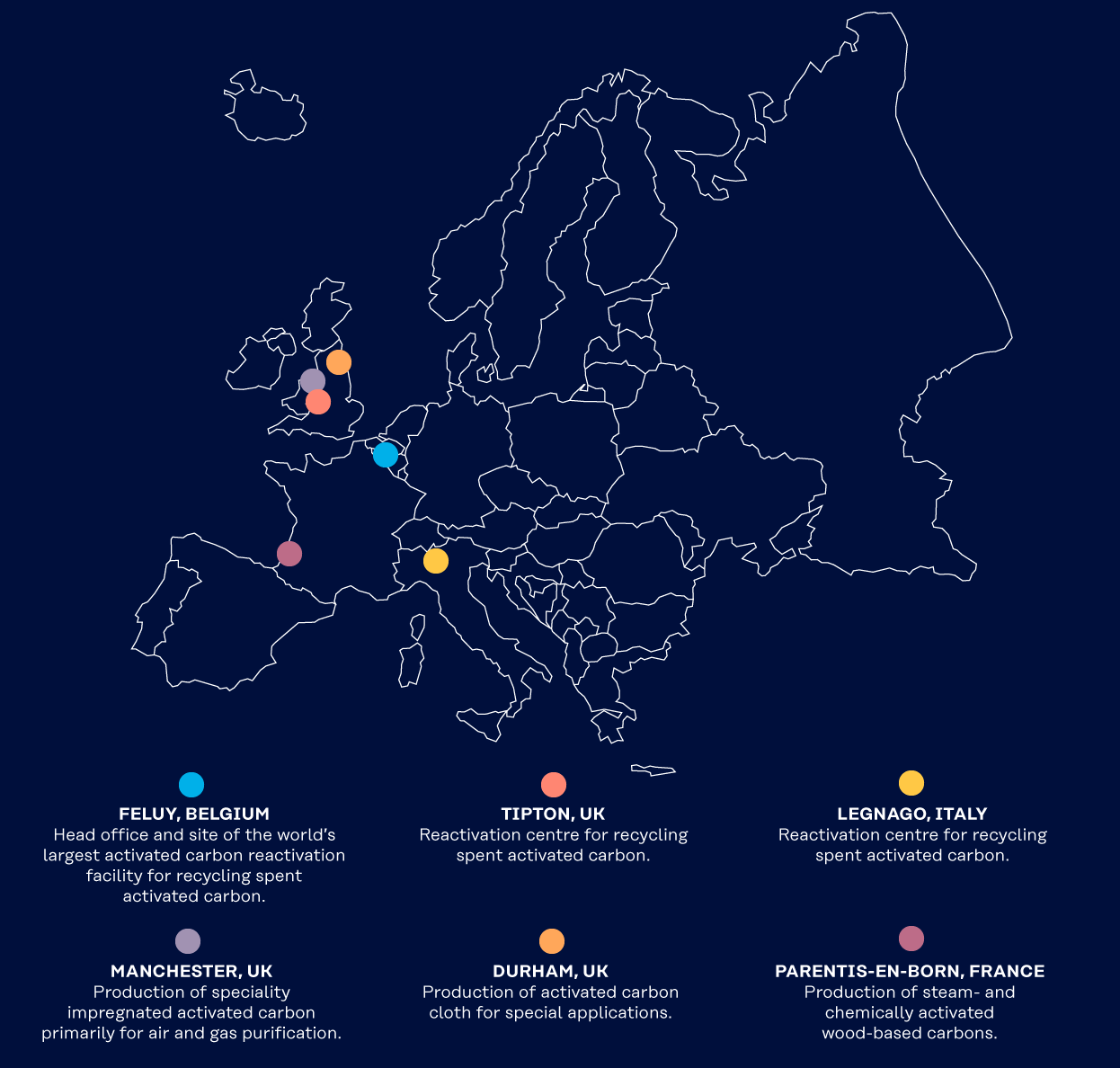 Contact
Contact
Do you have any questions,
need technical support or
would like to place an order?
Order form
Kuraray Europe GmbH Sustainability Blog Black gold: How activated carbon cleans our water
 Contact
Contact
Do you have any questions,
need technical support or
would like to place an order?
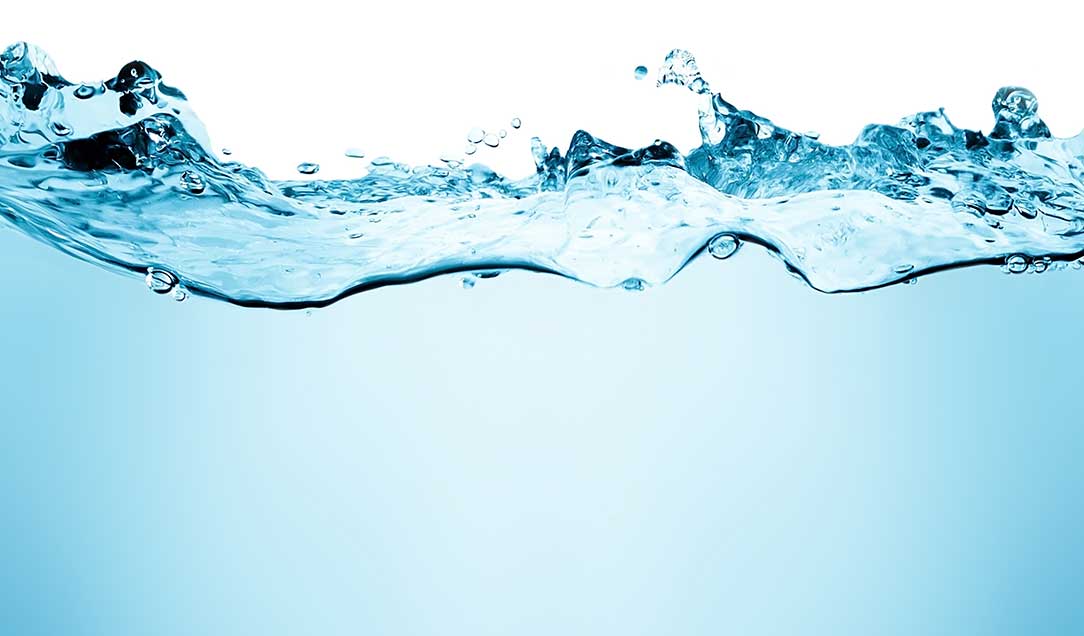
Clean water is a scarce commodity. Globally, we therefore have a collective responsibility to protect this vital resource. One key technology used in modern water treatment is purification with activated carbon. More and more companies – from the food processing sector and the chemical industry to public utilities – rely on activated carbon filters for effective and sustainable water purification. As well as producing the activated carbons required for such processes, Kuraray’s subsidiary Chemviron ensures that they can be recycled sustainably – and has a host of other good ideas on how to keep the environment healthy.
There is a long list of residual organic substances with poor degradability that can contaminate our drinking water, including pharmaceutical and pesticide residues, PFAS – also known as “forever chemicals” – and other organic contaminants. Activated carbon, a material that has been used since ancient times to remove toxic substances, is therefore becoming more and more important. This “black gold” was first used in water treatment on an industrial scale around 1900. Today it is a central component in many water purification and wastewater treatment plants, home water filters, food, chemical, and industrial processes around the world. Used on its own or in combination with other processes such as membrane filtration, UV disinfection and ozonation, activated carbon allows effective removal of trace contaminants, making an important contribution to protecting our water resources.
Activated carbon is a porous form of carbon produced from natural resources such as coal, wood, coconut shells and peat. Special treatment processes – such as heating in an oxygen-free environment followed by activation with steam or chemicals – give it an extremely large internal surface area. One teaspoon of activated carbon can have the same surface area as a football pitch! It is this massive surface area made up of countless microscopic pores that gives activated carbon its impressive adsorption capacity. Few other materials are so suitable for highly effective and sustainable filtration technologies.

Treatment of drinking water is inseparably linked to the name Chemviron. In Europe, high-performance FILTRASORB® activated carbon from this Kuraray subsidiary is the prime product for the purification of drinking water obtained from surface water and groundwater. The optimised pore structure of this granular product ensures reliable removal of a wide range of contaminants, including pesticides, trace organic compounds and PFAS. It is used in both fixed bed and mobile carbon filter systems – by municipal water utilities as well as in commercial and residential premises. Activated carbon from Chemviron is also used for effective removal of contaminants in industrial manufacturing and site remediation operations.
Durability is one of the special features of this product. Spent, in other words, used activated carbon can be thermally reactivated: The contaminants it has adsorbed are destroyed at elevated temperatures and the reactivated carbon can then be reused many times in the same application. As well as preserving valuable resources, that greatly reduces CO2 emissions.
»Chemviron develops state-of-the-art recycling processes for activated carbon and is consistently expanding its capacity. We operate the world’s largest reactivation facility for spent activated carbon and filter systems in Feluy, Belgium. There are similar facilities in the UK and Italy. At the same time, our laboratories and pilot plants are constantly working to improve processes and save resources.«
Reinier Keijzer
President, Chemviron
CYCLESORB® mobile carbon filter service: The prompt delivery and straightforward on-site replacement of the filters are part of Chemviron’s comprehensive activated carbon service. With CYCLEVENT®, a comparable service is also available for air purification.
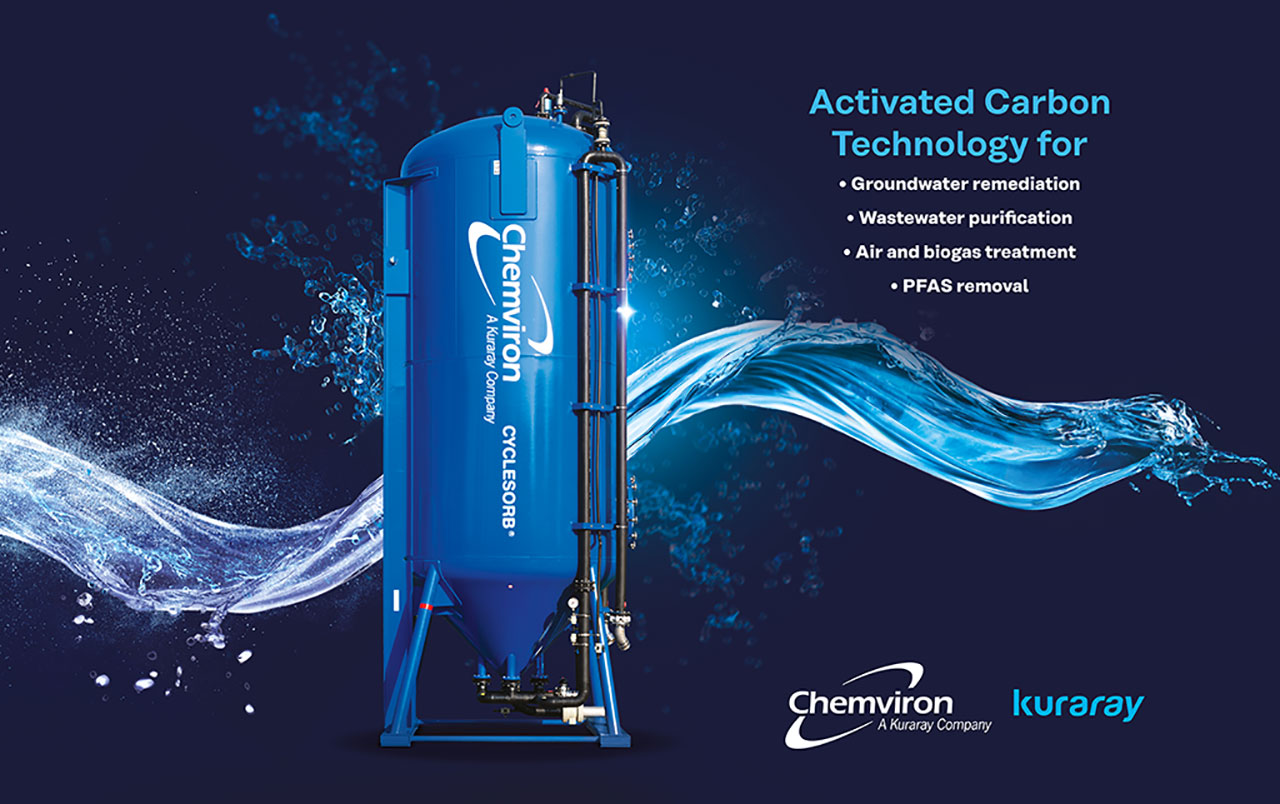
Public awareness of the big risks associated with these chemicals has been growing since the beginning of this century. Even though bans are looming, and legal regulations are becoming tougher, the legacy of past pollution remains with us. What’s more, PFAS are still getting into the environment, even from newly developed substances. Once they have been released, they are largely resistant to conventional methods of water treatment such as direct oxidation, biodegradation, steam extraction and (UV) photolysis.
In such cases, adsorption with activated carbon combined with recycling by thermal reactivation is a more suitable method. Granular activated carbon (GAC) filters from Chemviron have been shown to remove PFAS compounds in water to a non-detectable level. That makes Chemviron’s activated carbon filters one of the most effective methods of removing PFAS.
»The performance of activated carbon depends on many factors: Which PFAS are to be removed? What other contaminants are present in the water? What are the local operating conditions? A precise understanding of all these parameters is essential to select the most appropriate activated carbon system. Our specialists have the relevant experience and expertise.«
Timothy Mosselmans
Senior Manager Application Engineering, Chemviron
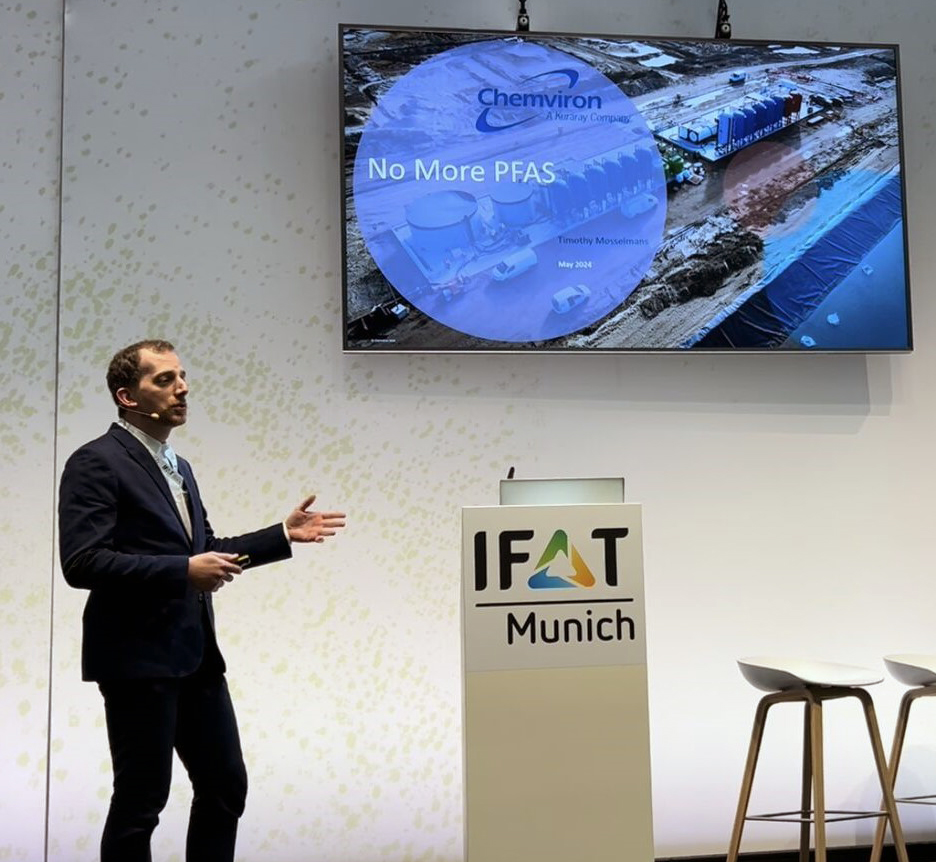
Per- and polyfluoroalkyl substances (PFAS) are fluorinated chemicals that do not occur naturally. They are found in many everyday products such as non-stick pans, outdoor clothing, fire extinguisher foam and packaging. PFAS are extremely stable and basically never break down in the natural environment. Over a long period, they therefore accumulate in the soil, water, plants, animals and even the human body. These days, PFAS can be detected everywhere in the world – even in remote areas such as the Arctic. Many of these substances are considered potential health hazards.

The need for efficient water treatment will continue to rise, not just because of more stringent environmental regulations, but also because of the growing awareness of the importance of saving resources and the circular economy. Activated carbon combined with reactivation will play a key role in this and Chemviron remains the leading technology provider with a wide range of sustainable and cost-effective solutions for purifying water and air.
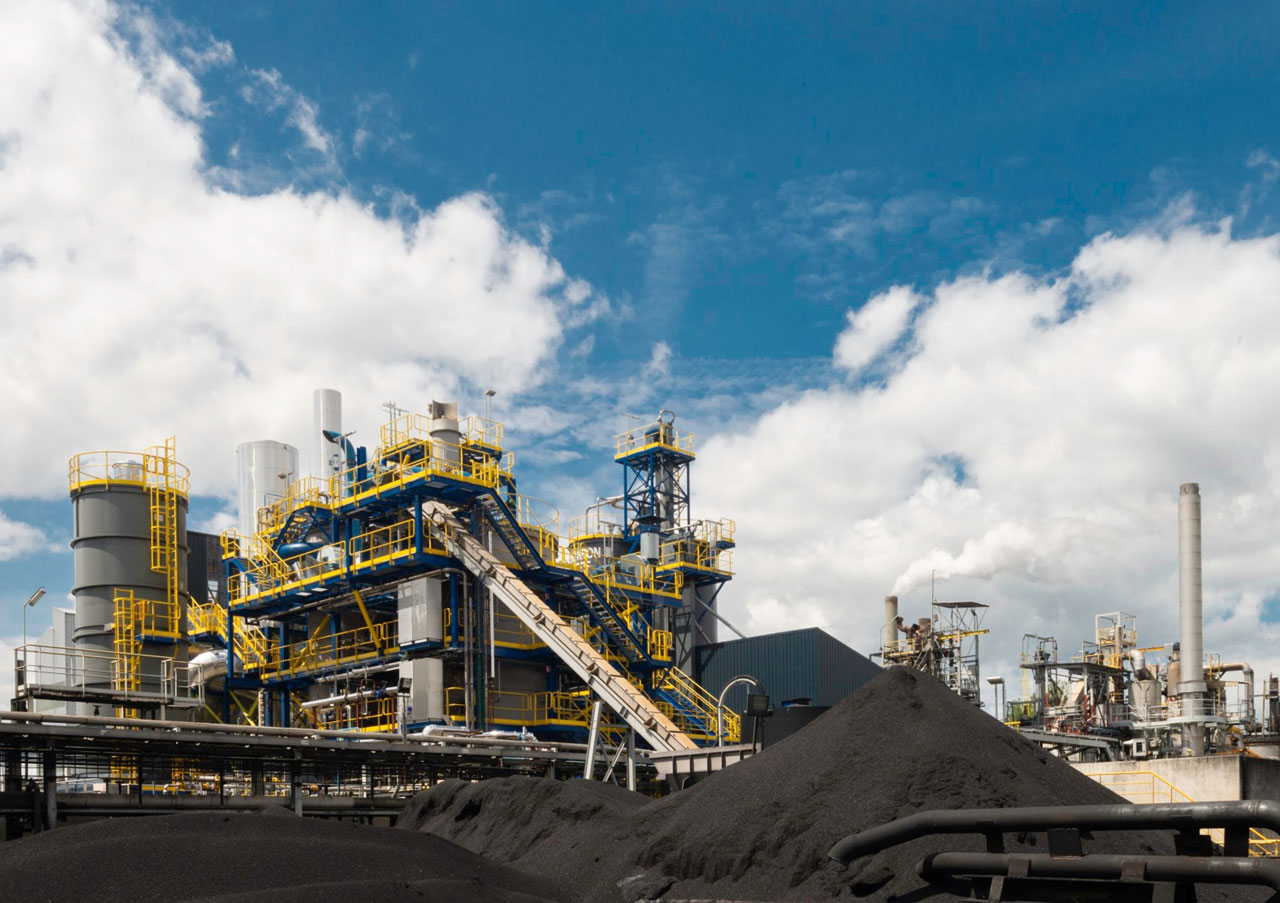
Chemviron is the European operations of Calgon Carbon Corporation of the USA. Both companies are part of the Kuraray Group. Together, they are among the three largest providers of activated carbon technology worldwide.
